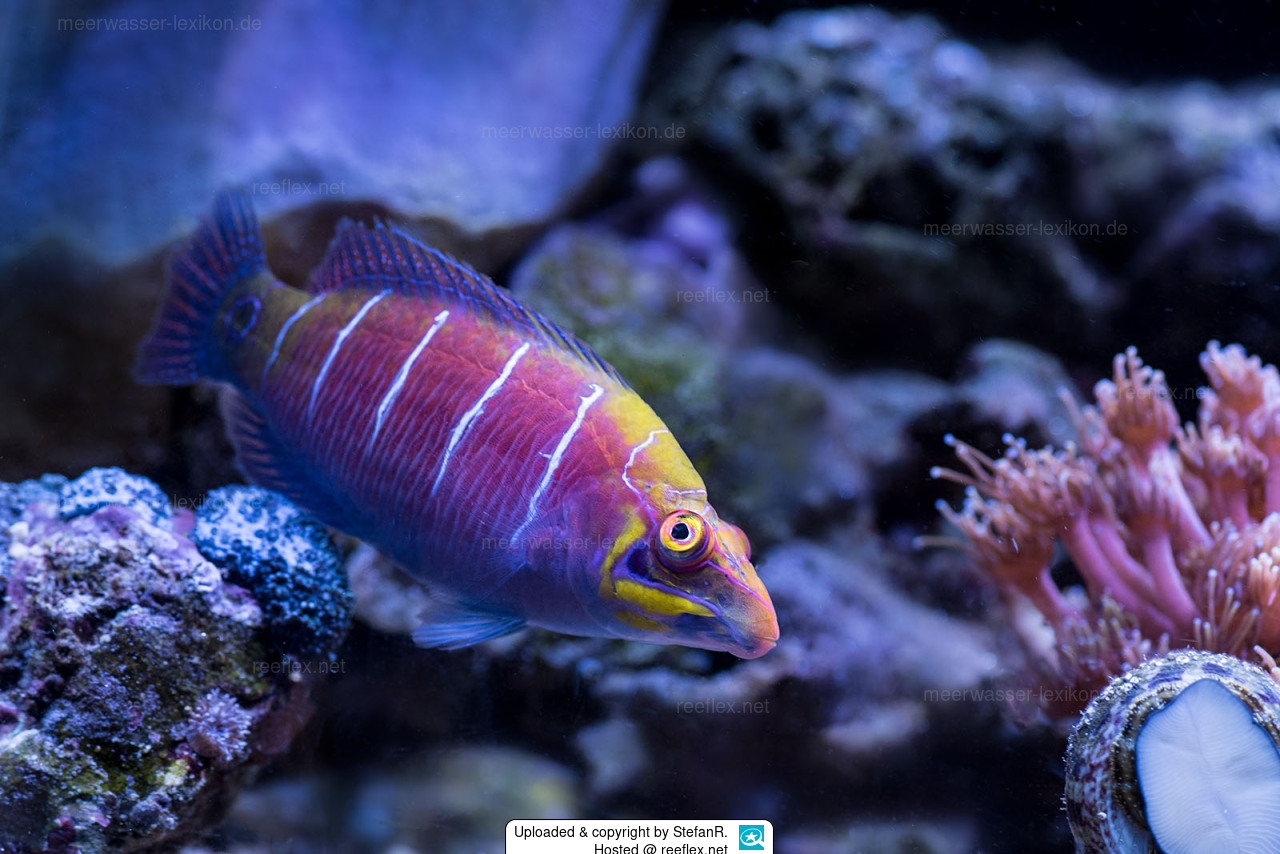Info
Pseudocheilinus ocellatus, Randall, 1999
Comes from the Marshall Islands.
Is quite expensive with about 200 Euro (08/2023), but beautiful.
Sensitive to transport like all Paracheilinus and Pseudocheilinus species.
Often gets spots in the first days.
Once these are over, the animal is not difficult to care for.
Initially, the fish is quite shy, but this gives itself with time.
Super rare in the trade.
The Pseudocheilinus species do not sleep in the sand at night but look for a quiet place and surround themselves with a cocoon (kind of protective coat that suppresses the smell for predators).
Jumping guard
A jumping guard prevents (nocturnal) fish from jumping out.
Wrasses, blennies, hawkfishs and gobies jump out of an unprotected tank in fright if their night rest is disturbed, unfortunately these jumpers are found dried up in the morning on carpets, glass edges or later behind the tank.
https://www.korallenriff.de/en/article/1925_5_Jump_Protection_Solutions_for_Fish_in_the_Aquarium__5_Net_Covers.html
A small night light also helps, as it provides the fish with a means of orientation in the dark!
Comes from the Marshall Islands.
Is quite expensive with about 200 Euro (08/2023), but beautiful.
Sensitive to transport like all Paracheilinus and Pseudocheilinus species.
Often gets spots in the first days.
Once these are over, the animal is not difficult to care for.
Initially, the fish is quite shy, but this gives itself with time.
Super rare in the trade.
The Pseudocheilinus species do not sleep in the sand at night but look for a quiet place and surround themselves with a cocoon (kind of protective coat that suppresses the smell for predators).
Jumping guard
A jumping guard prevents (nocturnal) fish from jumping out.
Wrasses, blennies, hawkfishs and gobies jump out of an unprotected tank in fright if their night rest is disturbed, unfortunately these jumpers are found dried up in the morning on carpets, glass edges or later behind the tank.
https://www.korallenriff.de/en/article/1925_5_Jump_Protection_Solutions_for_Fish_in_the_Aquarium__5_Net_Covers.html
A small night light also helps, as it provides the fish with a means of orientation in the dark!







 StefanR
StefanR


























